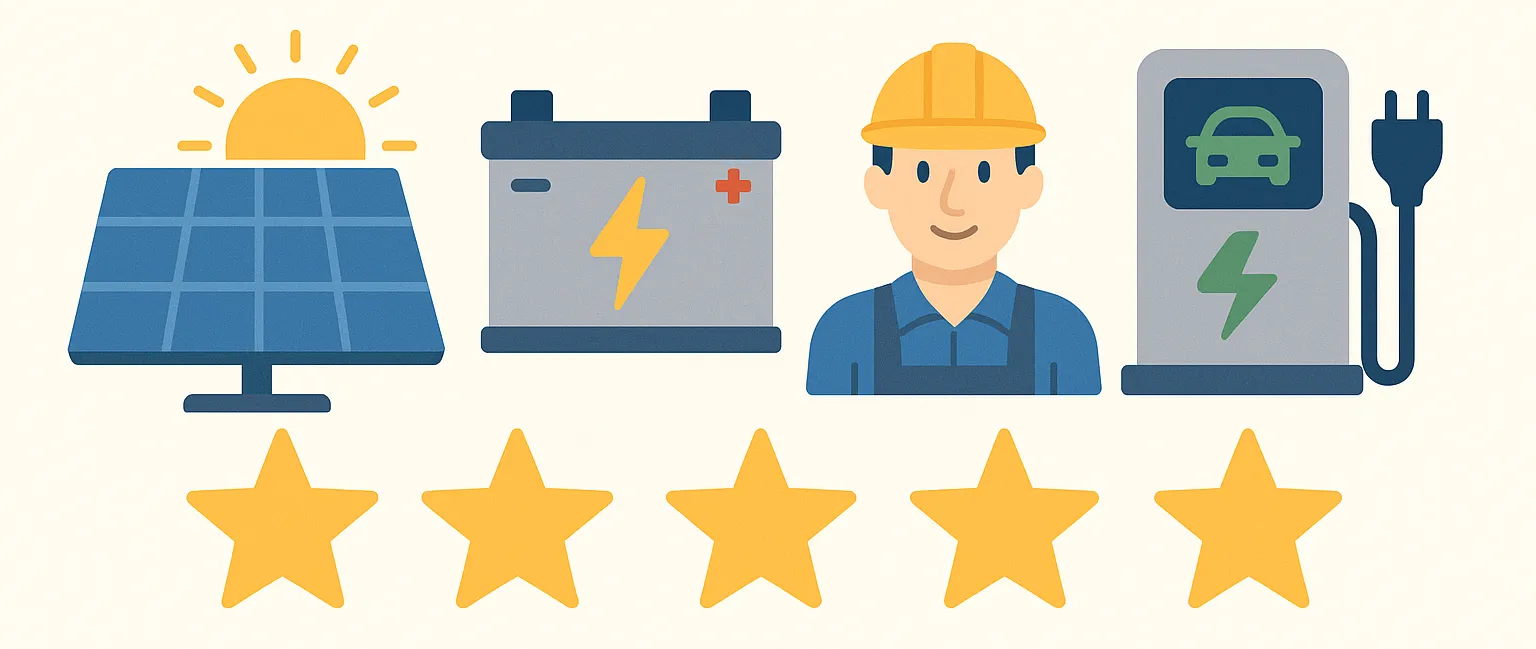With solar panels and a solar battery powering their home, Terry and his wife are part of a small but growing community of Australians who are ahead of the energy curve, taking energy production into their own hands.
While he feels like they are already reaping the benefits, Terry insists that choosing a solar battery requires careful thinking, especially now that batteries are becoming more mainstream and there are more options available.
“We wanted to become as self-sufficient as possible in our production and consumption of energy. That’s why we installed solar panels and a solar battery, mainly in response to the climate crisis. But doing your research and choosing an experienced installer is essential, otherwise things can go wrong”.
One in five Australian households now have solar panels installed on their roofs. As Australians become eager to make their own energy decisions, and confidence in the traditional energy market continues to decrease, more are choosing to install solar batteries. However, they need to be aware of how to go about it the right way.
The benefits of having a solar battery at home
The opportunity to be self-sufficient and to do the right thing for the environment was enough to persuade Terry and his wife to take the plunge and install a solar battery.
“We are responding to the climate crisis, and contributing to making Melbourne greener”, says Terry.
While there is a rebate available for the installation of solar batteries in Victoria, this was not the couple’s first motivator, but did make their decision to purchase a solar battery easier.
Terry insists that there are long-term financial benefits to having solar panels and a solar battery at home but cautions that researching them and understanding how to have your solar battery properly installed requires time and commitment. As a first step, he recommends reaching out to expert organisations, which offer credible advice on solar installations such as the Moreland Energy Foundation’s Positive Charge service located close to his home in Brunswick East, Melbourne.
Terry’s advice on installing a solar battery at home
Reflecting on his experience, Terry highlights a couple of challenges that can make the installation of a solar battery a tricky one.
“One of them is finding an appropriate location in your home to install your solar battery. Australian building laws require you to install solar batteries outdoors or in a shed, and not everyone has the space to do this. This also means that manufacturers must add components to solar batteries to protect them from weather conditions, which involves additional costs,” he said.
Terry also insists that choosing an experienced and qualified solar battery installer is essential.
“Battery storage can be complex to install. I’ve found that installers who are best equipped have acquired diverse experience as a qualified electrician, such as in commercial and industrial work, before specialising in the renewable energy sector.”
“If you don’t choose your installer carefully, you might end up with the installation not being conducted properly or taking more time than it should. Make sure to double check the credentials of the person who will perform your solar battery installation. Personally, I used a contact I knew was well trained and experienced in this field.”
There are simple things to be aware of to make sure solar battery installations are safe and effective. One thing to know is that the Clean Energy Council accredits individuals for the design and installation of solar batteries, ensuring they are trained and qualified to the Australian standard. It is important to ask for an installer’s Clean Energy Council accreditation ID, which will show whether they hold the battery storage endorsement. Learn more here.
Next steps to becoming energy self-sufficient
With their solar-powered home, Terry and his wife set a positive example of what’s possible to make Melbourne a more environmentally friendly place to live. They are already an energy-efficient household, consuming only 3kWh per day, which is only 20 per cent of the energy of the average Australian household.
From here, there’s no going back for them. The couple’s next step in becoming energy self-sufficient is to convert all their appliances to be powered by electricity, rather than gas. This way, they’ll cover most of their energy needs with their own solar panels and solar battery, jumping ahead of the curve once again. Article courtesy of www.solarcitizens.org.au
To find out more about investing solar batteries in your home, visit www.knowyourbattery.com.au
This article was first published on www.knowyourbattery.com.au


